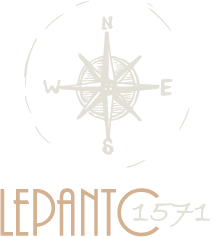
In 1499 a war broke out between the Ottoman Empire and the Serenissima Republic of Venice for the control of the Aegean Sea and the Eastern Mediterranean. The Ottomans aimed at conquering the territories occupied by Venice in the islands of the Aegean and Greece in general. The campaign had a predominantly naval character; the Kapudan Pasha Kemal Reis was in charge. The Venetian and Ottoman fleets encountered each other just outside of Pylos, at cape Koryphassion (Zonchio), close to the little island of Sphacteria. In a series of battles in August 1499 the Venetian fleet was defeated and the Ottomans moved fast and conquered the former Venetian regions: first fell Naupaktos (Lepanto) and last the two fortresses of Methoni and Koroni in Southwestern Peloponnese. The Ottoman conquest of Venetian-controlled lands in Mainland Greece and the Peloponnese had been accomplished until 1503, whereas the island of Leukada (Santa Maura) was also within Ottoman hands.
Sultan Beyazid II Veli administratively placed Naupaktos, now called by the Ottomans Inebahti, within the liva of Rumeli, made it the see of a kaza, and commemorated his victory by the erection of a mosque next which was called “Fethiye Camii”, i.e. the Mosque of the Conquest. The Ottomans reinforced the fortifications of the fortress and the port and built several public buildings (mosques, fountains, administrative buildings etc).
However, the most important Ottoman addition was the erection of the twin castles of Antirrio and Rio on the Peloponnese shore, which offered Naupaktos further protection and made the western entrance to the Corinthian gulf literally impossible to conquer.
Having realized the importance of Naupaktos, the Ottomans turned it into a port for harbouring and repairing their fleet during western expeditions. This resulted in a period of economic flourishment. The numerous and important monasteries around Naupaktos, such as at Vomvokou and Ambelakiotissa, prove that the Orthodox Christian inhabitants exercised freely their faith, whereas they also possessed enough funds for the maintenance, repair and enlargement of ecclesiastical buildings.

